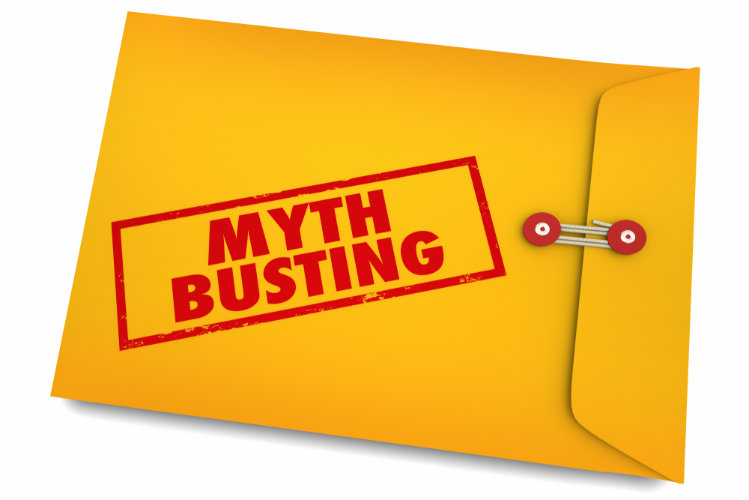In this article, we’re going to explain the structure and debunk a few Self-Directed IRA myths among retirement investors. There’s a lot of bad info out there, and we’re here to clear the air. These are things that regular financial institutions don’t want you to know. It’s time to get educated and take control of your future. The best way to do that is diversifying your portfolio and preparing for economic turmoil before it’s too late. Let’s get started!
- Don’t believe everything you read about Self-Directed IRAs
- It’s time ti debunk the myths that are being perpetrated
- Learn why the Self-Directed IRA is the ultimate retirement savings vehicle around
What is a Self-Directed IRA?
The Self-Directed IRA is a retirement account that allows investors to save for retirement, while investing in a tax-advantageous environment. The use of retirement funds to make investments creates tax-deferred or tax-free (Roth IRA) growth on income and gains the investment generates. Unlike a traditional IRA, the Self-Directed IRA allows you to make alternative investments, such as real estate, peer-to-peer lending, and private business/placements. By investing in non-traditional assets, you diversify your retirement portfolio and invest in assets you know, among many other benefits.
Self-Directed IRA Myths
All IRA Custodians are the Same
In fact, most IRA custodians differ quite a lot. If you currently have a traditional IRA with a bank, what are your investment options? Stocks? Bonds? Mutual Funds? How about real estate? Precious Metals and Coins? Businesses? Most major financial institutions limit on what you are allowed to invest in. They only make money when you make traditional investments, like stocks and mutual funds. Even though many of these institutions offer the Self-Directed IRA, you still don’t have complete freedom.
Again, some will limit your investment options and others require permission to make an investment. On the other hand, IRA Financial offers you full autonomy when it comes to investing YOUR money. You can invest in any allowable investment, whenever you want, without our consent. When choosing an IRA custodian, it’s important to understand what you may invest in and if you need consent.
A Self-Directed IRA is Different than a Traditional IRA
While it’s true that there are differences, a Self-Directed IRA is essentially a traditional IRA. The major differences is that you are control what investments you make and the timing in which they are made. All IRAs follow the same rules set forth by the IRS. In that sense, a Self-Directed IRA is exactly the same as any other traditional IRA.
Furthermore, Roth IRAs and Self-Directed Roth IRAs follow the same rules as well. Again, investment choices are much wider for any type of self-directed retirement account. Roth IRAs offer the additional benefit of tax-free qualified withdrawals during retirement.
Related: What is a Self-Directed IRA?
You Can’t Own Real Estate with Your IRA
That’s unequivocally false. In fact, the most widespread investment using a Self-Directed IRA is real estate. Many financial institutions might try to convince you otherwise, since they don’t make money off real estate investments. So long as no prohibited transaction rules are broken, you can invest in anything with your IRA. Basically, you cannot invest in life insurance, most collectibles and one that involves a disqualified person.
That last one may be why some people are afraid to use retirement funds for real estate investing. If you purchase real estate with an IRA, only the IRA can benefit from it. This means, you (and other disqualified persons) can’t personally benefit from the investment. For example, you can purchase a vacation property, but you can’t personally use it. You can, however, rent out the property until you distribute the property in retirement. At that point, it will no longer be owned by the IRA, and you can do as you will with it.
Self-Directed IRAs are Complicated to Open
Again, this Self-Directed IRA myth goes back to the standard financial institutions. Of course, they’re not going to make it known how great Self-Directed IRAs are. They want you to keep your money with them, investing in their products. IRA Financial experts can set up your Self-Directed IRA in no time, and at a fraction of the cost of other custodians. We will always make sure your IRA is IRS compliant and will handle all paperwork. While we do not offer investment advice, it’s crucial you work with a financial adviser to help with your investment decisions.
Once opened, you will have full control of your IRA funds with our Checkbook Control structure. This allows you to make an investment anytime you want by simply writing a check. No longer do you need permission from an IRA custodian/administrator.
Read More: How to Open a Self-Directed IRA Online
I Can’t Contribute to a Self-Directed IRA if I have a 401(k)
Some people mistakenly believe that they cannot contribute to an IRA if they already contribute to a 401(k) plan. In fact, the more you can stock away in all available retirement plans, the better. If you (or your spouse) participate in a 401(k) plan, your income decides if you can deduct your IRA contribution. While tax deductions are a huge benefit to traditional IRAs, it’s still wise to contribute even if you are not eligible.
Roth IRA contributions can only be made directly if you are under the income threshold. Once you earn too much money, you are no longer allowed to contribute directly to a Roth. For 2019, you cannot contribute to a Roth IRA if you earned more than $137,000 as a single filer or $203,00 if filing jointly with your spouse.
Related: The Roth IRA Advantage
My IRA Balance is too Low to Self-Direct
Even if you don’t have a million-dollar IRA, that doesn’t mean you shouldn’t go self-direct. Yes, it’s nice to buy real estate properties to flip or rent, but there are other investments you can make with lower costs. Roofstock allows you to buy stakes in rental properties much cheaper than being on the hook for entire purchases.
Other alternative investments, such as metals, cryptos and hard money loans can be profitable, even when only investing a small amount. Plus, alternative investments helps you diversify your portfolio. Having your money all in one place (such as the Stock Market) is not a smart decision.
Debunking Self-Directed IRA Myths
One Self-Directed IRA “myth” that’s absolutely true is that there is a chance of fraud. Like any other get-rich-quick scheme, you should be careful when a deal looks too good to be true.
We here at IRA Financial want our clients to know that our Self-Directed IRA structure adheres to all IRS guidelines. Plus, we will never tell you what investment to make. That’s up to you to decide. We don’t make money by pushing investments on you like other custodians might.
There is a lot of false information out there about these types of plans. Most of it, as they say, is fake news. Not only are Self-Directed IRA plans totally legal, but they’re also arguably the best way to invest retirement funds. Don’t let the naysayers affect your retirement. Do your own research to see why a Self-Directed IRA is right for you.
Learn More: How to Choose the Best Self-Directed IRA Custodian
Get in Touch
If you have ANY questions or concerns about Self-Directed IRA myths you might’ve read about, please feel free to contact us. One of our missions is to enlighten people about the positives of the structure, while also discussing the complexities of it. If you would like to discuss further, call us at 800.472.0646 anytime!













